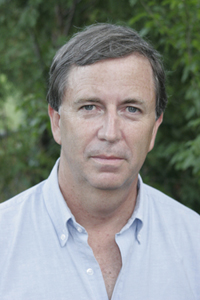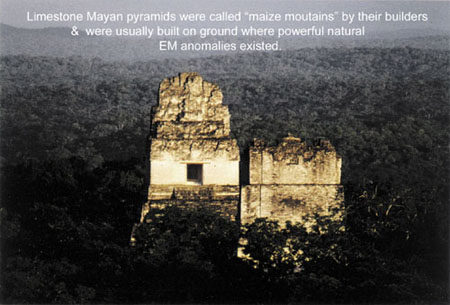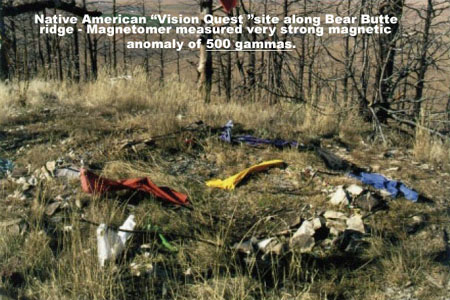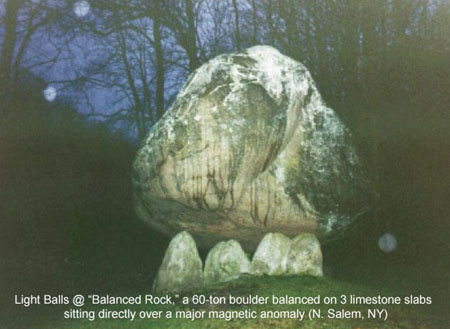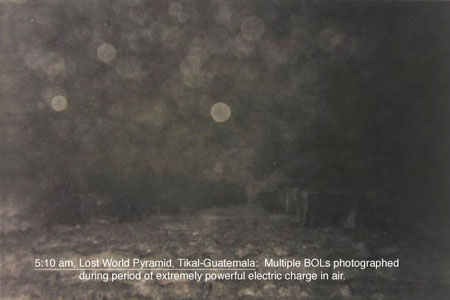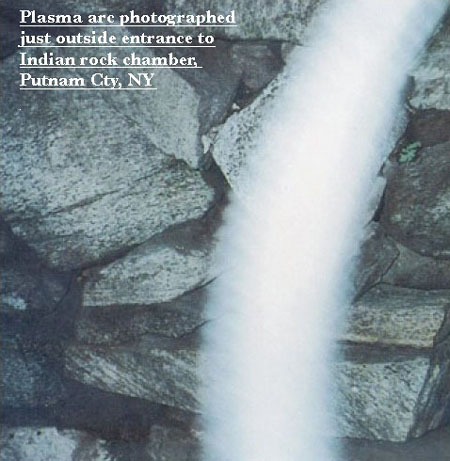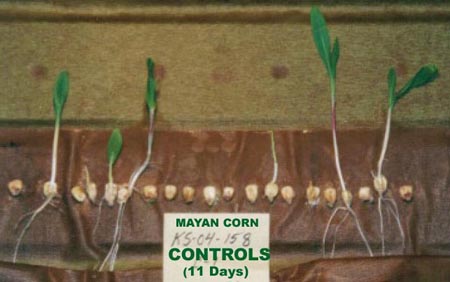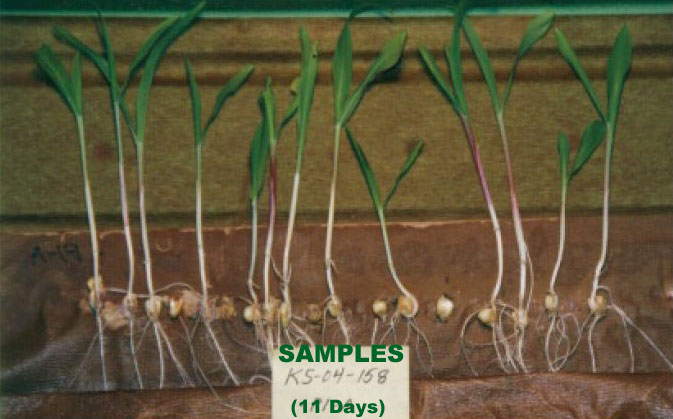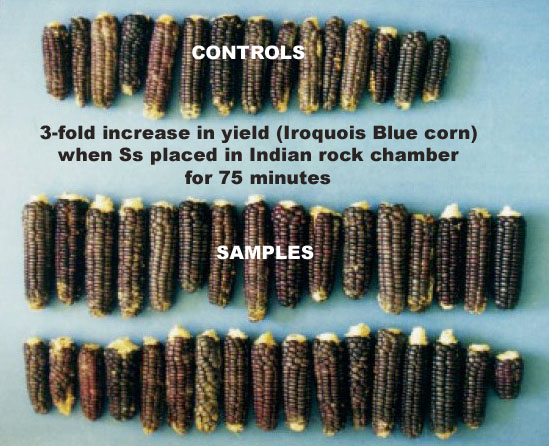LOST TECHNOLOGY OF THE ANCIENTS:
DID THE BUILDERS OF MEGALITHIC MONUMENTS KNOW THIS SECRET?
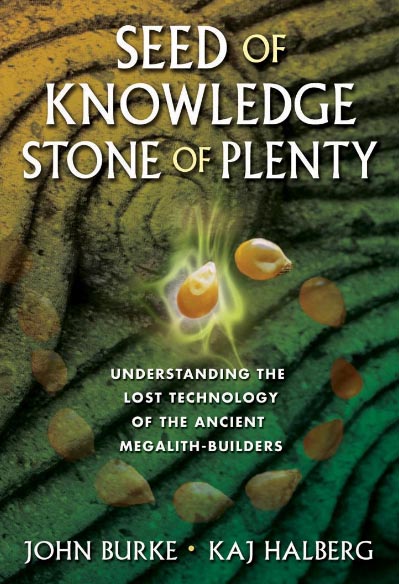 |
A recent book, Seed of Knowledge, Stone of Plenty, by John Burke (the "B" in "BLT Research Team") and his colleague Kaj Halberg (Council Oaks Books, 2005: ISBN #1-57178-184-6 and ISBN #978-1-57178-184-0) presents scientifically documented evidence that the old-world engineers who built the massive henges, pyramids, mounds and dolmen of the ancient world may well have understood a true secret—lost to modern man until now. The authors show that these structures were overwhelmingly sited at locations where the local geology magnified naturally-occurring electromagnetic fluctuations in the earth's crust and, further, that pyramidal and corbel- roofed stone structures erected at these locations enhanced this effect.
Burke and Halberg conducted instrument surveys at various old-world monuments such as the King's and Queen's Pyramids in Tikal, Guatemala, and at Olmec mounds and various other monuments of the pre-Incan civilization at Tiwanaku on the shores of Lake Titicacca, as well as at English henges and at the oldest megaliths in the world (circa 4,800 B.C.) at Carnac, in the Brittany section of France. Magnetometer surveys were also carried out at many American Indian "vision quest" sites, some of which are still in use today by Native people, and the readings obtained at these sacred sites were among the highest found anywhere.
People interested in the crop circle phenomenon will be familiar with some of the photographic anomalies obtained during this project: "ball of light" (BOL) and other light anomalies similar to those regularly obtained in and around crop circles all over the world. But they may be unaware that stone structures, particularly when built in a conical or pyramidal shape over a naturally-occurring EM hot-spot, concentrate these energies—resulting in intensified electric charge in the surrounding air and, under certain conditions, BOLs and plasma arc discharges.
Also familiar to individuals who are aware of the scientific research conducted on crop circle plants is the fact that seedlings grown from seeds taken from plants inside the formations regularly exhibit abnormal growth patterns, relative to control seedlings: [www.bltresearch.com/plantab.php, item #5 (a)(b)(c)(d)]. We know that when crop circles occur early in the growth season the seeds from these plants show significantly retarded growth habit. Of perhaps greater interest is the fact that seedlings grown from seeds obtained from late-season crop circles show not only a marked increase in growth-rate, these plants produce greater yield than the controls, in conjunction with increased resistance to "growth stressors" (lack of sunlight and/or water). Following the discovery of these germination and growth changes in crop circle plant seeds, research carried out by W.C. Levengood and John Burke eventually resulted in the development of a non-chemical, non-genetic technology which stimulates normal seeds to produce beneficial antioxidants. This MIR StressGuard process improves the seedlings' ability to withstand free radicals, resulting in the same increased growth rate and yield, and increased resistance to plant stressors, with no harmful environmental consequences.
Below, forty seeds of "Iroquois Blue Flint" corn which had been placed inside a Native American rock chamber with highly magnetic stone roof-slabs not only grew almost 100% faster than 40 controls, they produced three times as much corn, by weight.
Comments made by people who've read Seed of Knowledge, Stone of Plenty:
And these remarks from Boston University geology professor Dr. Robert Schoch (author of Pyramid Quest and the scientist who first re-dated the carving of the Great Sphinx in Egypt, based on weathering patterns caused by water, rather than wind, erosion):
Available in many bookstores and at amazon.com. |
